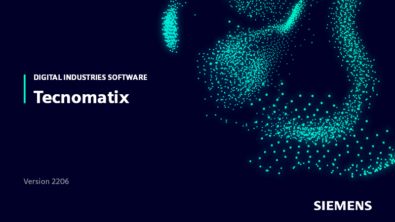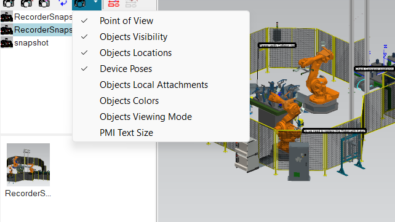Collaborative Manufacturing is Critical for Success in Today’s Heavy Equipment Industry

Heavy Equipment is getting “smarter”
When you think about the latest manufacturing trends, such as Electrification and Autonomous, your first instinct may be to think about the Automotive industry. But these trends are as relevant in the Heavy Equipment industry as they are anywhere else.

Take Autonomous, for example: In the Automotive industry, there are numerous factors that make it very difficult to realize fully autonomous driving. Multiple lane roads, crowded traffic, stop lights and road signs all contribute to this challenge.
Now think about the Heavy Equipment industry: An autonomous application may be a single tractor in a large open field with no traffic signals to obey. This makes it a much better candidate for autonomous technology and this is being recognized more and more throughout the industry.
These new industry trends are putting increased pressure on manufacturing organizations in the Heavy Equipment industry. In order to meet the challenges brought on by these trends, Heavy Equipment OEMs are being forced to deal with more stringent requirements, increasing product complexity, and ongoing improvement initiatives, among other things.

Heavy Equipment OEMs know that a “business-as-usual” approach will not suffice if they are to be successful in this new, increasingly complex environment. As a result, these companies are acknowledging a need for digitalization. As a first step on the road to digitalization, Heavy Equipment OEMs are starting to digitize legacy processes but, as shown below, they still have a long way to go.

Progressing past simple digitization and realizing full digitalization in Heavy Equipment Manufacturing is a huge undertaking. To optimize manufacturing productivity and win in the global marketplace, Heavy Equipment manufacturers must collaborate efficiently throughout their entire organization by establishing and leveraging a common digital thread from design to execution and beyond. And Siemens Digital Industries Software provides the solutions required to achieve this vision.

Siemens makes it possible to realize a true production digital twin by leveraging solutions that enable the digital thread. These solutions enable true collaboration at all stages of the product lifecycle. Manufacturing Planning can collaborate with Design Engineering during early stages of the product design while they still have the ability to influence the design, and the cost of doing so is low as compared to making a design change much later in the lifecycle.
Another example of this type of collaboration is on the manufacturing execution side of things – shop floor personnel can provide feedback and continuous improvement suggestions to manufacturing engineering personnel in the context of an Electronic Work Instruction. This makes it much easier for manufacturing planning to understand exactly what is being communicated from the shop floor.

The high-level digital thread solutions that enable the collaboration required to be successful in the Heavy Equipment industry are as follows:
-
- Product Configuration – essential for a Configure-To-Order industry, the ability to configure a Manufacturing Bill Of Materials (MBOM) into a specific customer order
-
- Manufacturing Planning – development of the Manufacturing Bill Of Process (BOP)
-
- Design & Validation – the ability to virtually validate the process plan to eliminate potential shop floor issues
-
- Production Support – enabling efficient production with tools to support layout development and Electronic Work Instructions
-
- Optimization & Execution – interfacing with manufacturing execution systems and leveraging a digital twin to continuously optimize production
-
- Data & Change Management – the ability to handle the large amounts of data and changes that occur throughout the product lifecycle

These solutions close the digital gap from product design to production execution and make digitalization a reality in the Heavy Equipment industry.

For more information on Siemens Collaborative Manufacturing solutions for the Heavy Equipment industry, please visit us at: https://www.plm.automation.siemens.com/global/en/industries/industrial-machinery-heavy-equipment/heavy-equipment/collaborative-manufacturing.html
About Dave Introcaso
Dave Introcaso is a Business Consultant in the Manufacturing Engineering Software business segment at Siemens Digital Industries Software, where he supports the implementation of Tecnomatix Digital Manufacturing solutions across multiple industries. After joining Siemens in 2004, Dave served as an on-site consultant at an automotive OEM where he assisted with the global implementation of Digital Manufacturing methods and best practices. Prior to joining Siemens, he supervised and executed process planning projects at a Tier One supplier for various automotive OEMs. Dave holds a Bachelor of Applied Science degree in Mechanical Engineering from the University of Windsor in Ontario, Canada.


